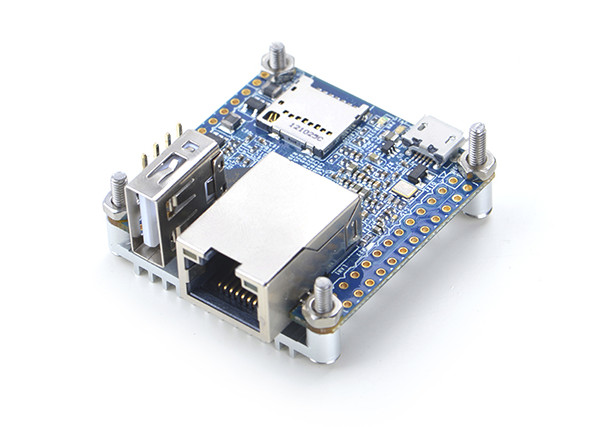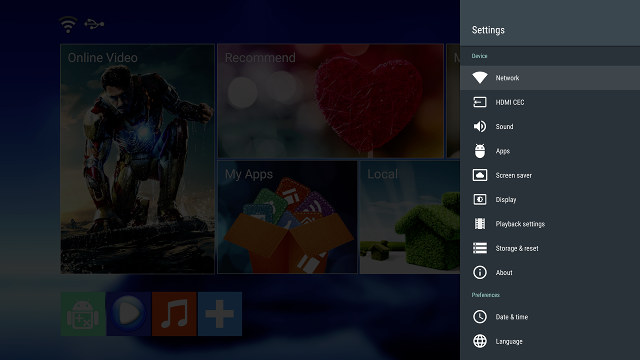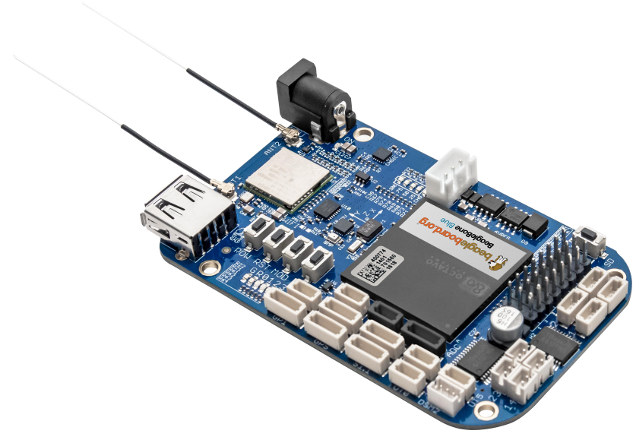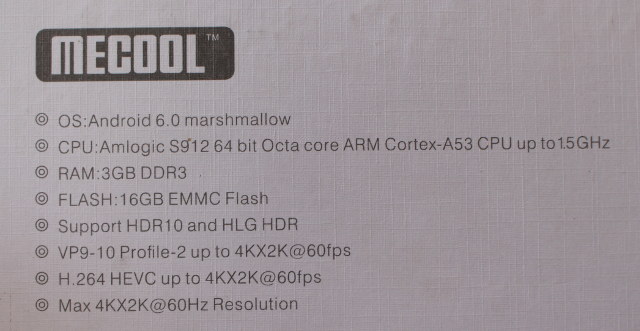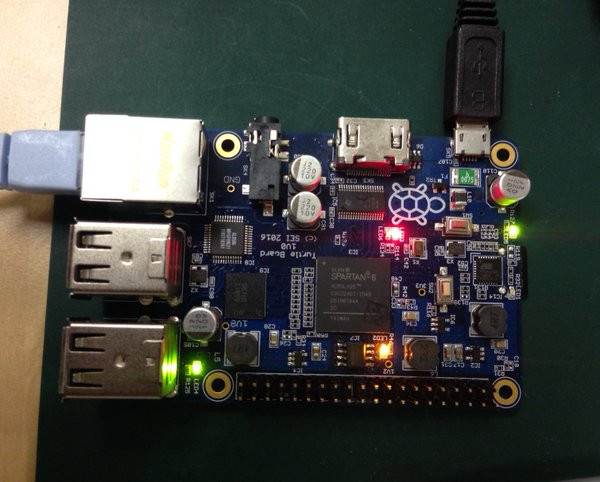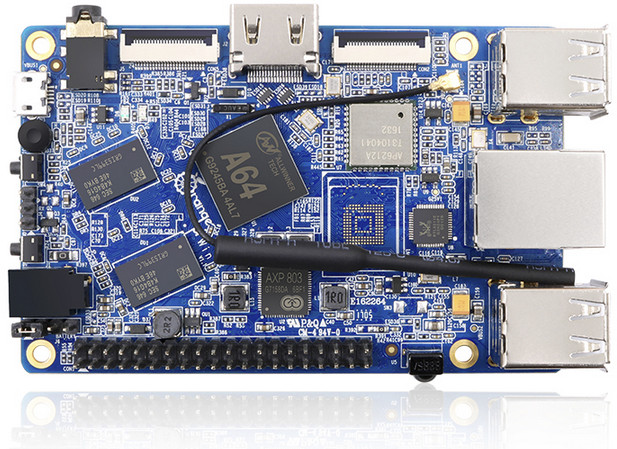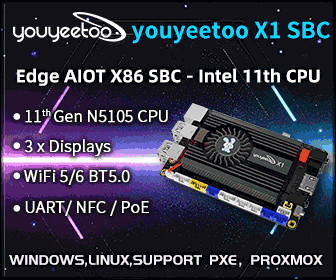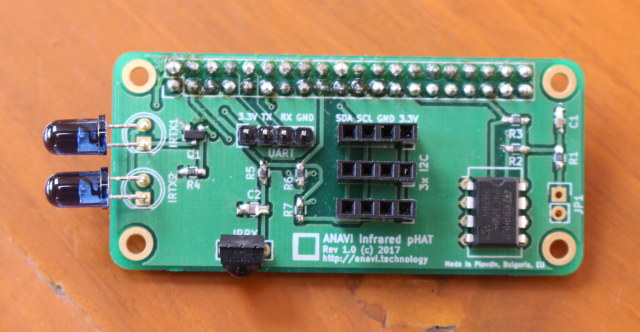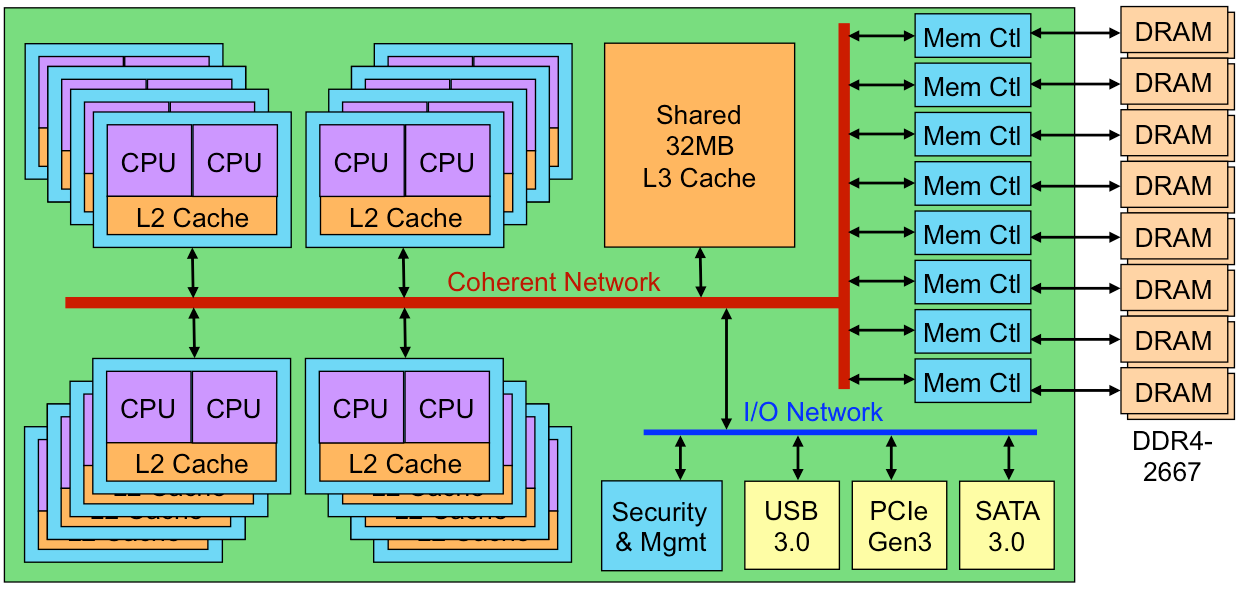NanoPi NEO is a cool little board, and I’ve been using it with Armbian as a 24/7 MQTT + Domoticz server for several weeks without any issues so far. FriendlyElec has now an update with NanoPi NEO2 featuring Allwinner H5 quad core Cortex A53 processor instead of Allwinner H3 Cortex A7 processor, a faster Gigabit Ethernet connection, and a new audio header. NanoPi NEO2 specifications: SoC – Allwinner H5 quad core Cortex A53 processor with an ARM Mali-450MP GPU System Memory – 512 MB DDR3 Storage – micro SD card slot Connectivity – Gigabit Ethernet (via RTL8211E-VB-CG chip) USB – 1x USB 2.0 host ports, 1x micro USB OTG port, 2x USB via headers Expansion headers 24-pin header with I2C, 2x UART, SPI, PWM, and power signals 12-pin header with 2x USB, IR pin, I2S 5-pin audio header with microphone and LINE out signals Debugging – 4-pin header for serial […]
Android 7.1 Nougat on Amlogic TV Boxes – A First Quick Look
Last year, we found out that Amlogic was working on Linux 4.4, possibly for their Android 7.0 Nougat SDK. As a developer who signed all relevant NDAs, Stane1983 has now been working on Amlogic Android 7.0 for a few day, and reported some of his findings. First Amlogic source code is based on Android 7.1.1 R6 (NMF26Q), but still with Linux 3.14.29, possibly because Mali-T830 GPU drivers are still r11p0, and Linux 4.4 may come later. One good thing is that the Nougat SDK supports 64-bit Android OS instead of the 32-bit Android we are all currently using in our TV boxes. A not-so-good news is that internal storage partitions have changed, which means most current TV boxes are unlikely to get an update, becau it may not be possible to perform OTA updated, and instead would require an updated via Amlogic USB burning tool. But let’s look at the […]
$80 BeagleBone Blue Board Targets Robots & Drones, Robotics Education
Last year, we reported that BeagleBoard.org was working with the University of California San Diego on BeagleBone Blue board for robotics educational kits such as EduMiP self-balancing robot, and EduRover four wheel robot. The board has finally launched, so we know the full details, and it can be purchased for about $80 on Mouser, Element14 or Arrow websites. BeagleBone Blue specifications: SiP (System-in-Package) – Octavo Systems OSD3358 with TI Sitara AM3358 ARM Cortex-A8 processor @ up to 1 GHz, 2×32-bit 200-MHz programmable real-time units (PRUs), PowerVR SGX530 GPU, PMIC, and 512MB DDR3 Storage – 4GB eMMC flash, micro SD slot Connectivity – WiFi 802.11 b/g/n, Bluetooth 4.1 LE (TI Wilink 8) with two antennas USB – 1x USB 2.0 client and host port Sensors – 9 axis IMU, barometer Expansion Motor control – 8x 6V servo out, 4x DC motor out, 4x quadrature encoder in Other interfaces – GPIOs, 5x UARTs, 2x […]
Mecool KIII Pro Hybrid Android STB Review – Part 1: Specs, Unboxing and Teardown
K1 Plus T2 S2 review has been a popular post on CNX Software, as many people tried to improve their experience with the device. VideoStrong has just send an updated version of their DVB-T2 + DVB-S2 TV box with Mecool KIII Pro octa-core Hybrid STB powered by an Amlogic S912 processor combined with 3 GB RAM and 16GB storage, and the same dual tuner configuration. I’ve started the review by posting some pictures of the hardware, inside out, before reporting my experience with Android, especially the DTV part, in a few weeks. KIII Pro Specifications SoC – Amlogic S912 octa core ARM Cortex-A53 @ up to 1.5 GHz with Mali-T820MP3 GPU System Memory – 3 GB DDR3 Storage – 16GB eMMC flash + micro SD card slot up to 32GB Video Output – HDMI 2.0a up to 4K @ 60Hz with support for HDR10 and HLG, and 3.5mm AV (composite […]
Turtle Board is a Raspberry Pi 2 Like FPGA Board for J-Core J2 Open Source SuperH SH2 SoC
J-core J2 is an open source processor and SoC design implemented in VHDL, and using SH2 instruction set found in some Renesas (previously Hitachi) micro-controllers. The code available royalty free under a BSD license, and it’s also patent-free since all SH2 related patents expired expired in October 2014. The developers used to run the code on Xilinx Spartan 6 based Numato Mimas v2 board since it was cheap ($50) and mostly did the job. “Mostly”, because it still lacked Ethernet, capability for SMP and the serial port was slow, so they decided to design their own Turtle Board to address those issues. Turtle Board preliminary specifications: FPGA – Xilinx Spartan 6 LS25 or LS45 FPGA MCU – 8-bit Atmel MCU for load/update flash at power on. Storage – micro SD slot, 8MB SPI flash System memory – 256 MB RAM Video & Audio Output – HDMI and AV jack Connectivity […]
$25 Orange Pi Win Development Board To Run Windows 10 IoT (and Linux, and Android)
Shenzhen Xunlong Software must already have over a dozen of Orange Pi boards, but this is not stopping them from launching more, and the company has just introduced Orange Pi Win, powered by Allwinner A64 processor, and beside supporting Linux and Android like other models, it’s rumored to run Windows 10 IoT too.Orange Pi Win specifications: SoC – Allwinner A64 quad core ARM Cortex A53 processor @ 1.2 GHz with Mali-400MP2 GPU System Memory – 1 GB DDR3 Storage – 2MB SPI flash, micro SD slot up to 64 GB, footprint for optional eMMC flash Video Output / Display interface – HDMI 1.4 up to 4K @ 30 Hz with CEC 3D and HDCP support,, MIPI LCD interface Audio – HDMI, 3.5 mm headphone jack, built-in microphone Connectivity – Gigabit Ethernet + 802.11 b/g/n WiFi & Bluetooth 4.2 (AP6212) USB – 4x USB 2.0 host ports, 1x micro USB OTG […]
How to Control Your Air Conditioner with Raspberry Pi Board and ANAVI Infrared pHAT
Leon ANAVI may be a full-time software engineer, but in his spare time he has started to develop open source hardware project with the help of others and by himself. Last year, I got hold of his RabbitMax Flex HAT for Raspberry Pi, and tested it with the provided LCD display, one temperature sensor, and a Raspberry Pi 2 board. The board also featured IR receiver & transmitter, and I tried to use it with my aircon remote control, but at the time I did not find a way to do it easily, and control my TV with LIRC instead. Leon has now made a simpler, smaller, and cheaper add-on board for Raspberry Pi Zero, and other Raspberry Pi boards with a 40-pin header, with 3x I2C headers, two IR transmitters, and one IR receiver. He sent me a sample of “ANAVI Infrared pHAT”, and after quickly describing the board, […]
MACOM X-Gene 3 Server-on-Chip is Equipped with 32 64-bit ARM Cores Clocked at 3.0 GHz
MACOM, having recently completed the acquisition of AppliedMicro, has now announced sampling of X-Gene 3 Server-on-a-Chip (SoC) with 16-nanometer FinFET process technology. X-Gene 3 features 32-core ARMv8 cores clocked at up to 3.0 GHz, 8 DDR4 channels, 42 PCIe Gen 3 lanes, SATA 3.0 and USB 3.0. X-Gene 3 SoC key features and specifications CPU – 32x 64-bit ARMv8 cores @ up to 3.0 GHZ (base freq.) / 3.3 GHz (turbo freq.) Cache – 32MB L3 cache Memory IF – 8x DDR4-2667 channels with ECC and RAS supporting up to 16DIMMs for up to 1TB RAM Storage – SATA 3.0 interfaces 42x PCIe Gen 3 lanes with 8x controllers USB 3.0 interfaces Max. TDP – 125 Watts (Expected) Process – 16nm FinFET TSMC X-Gene 3 is said to offer 4 to 6 better performance compared to X-Gene 2, and match “comparable x86 processors in CPU throughput, per-thread performance and power […]


